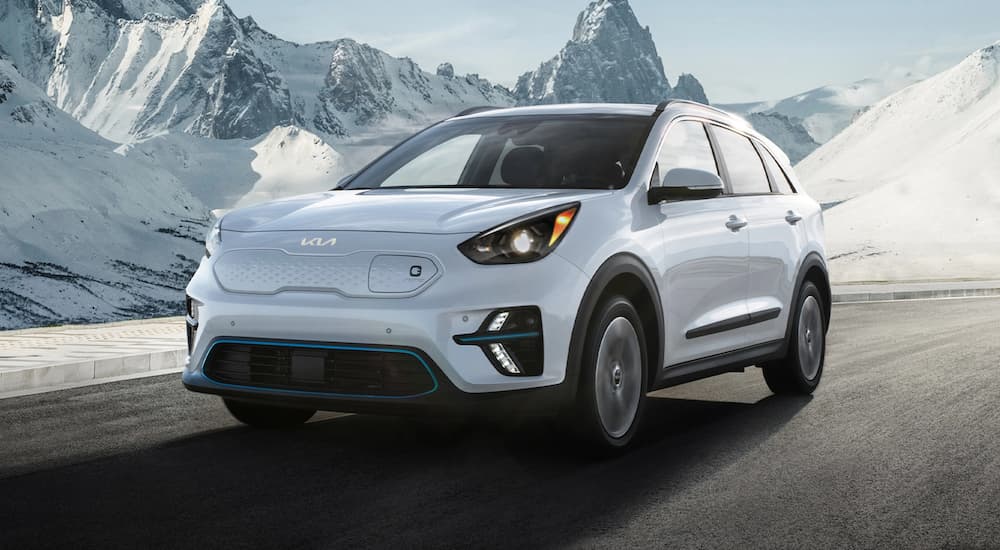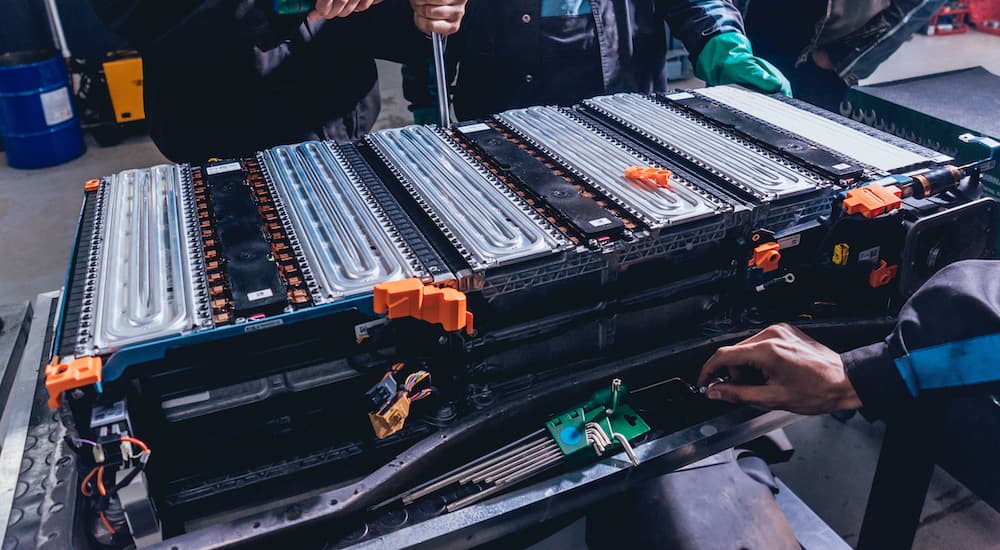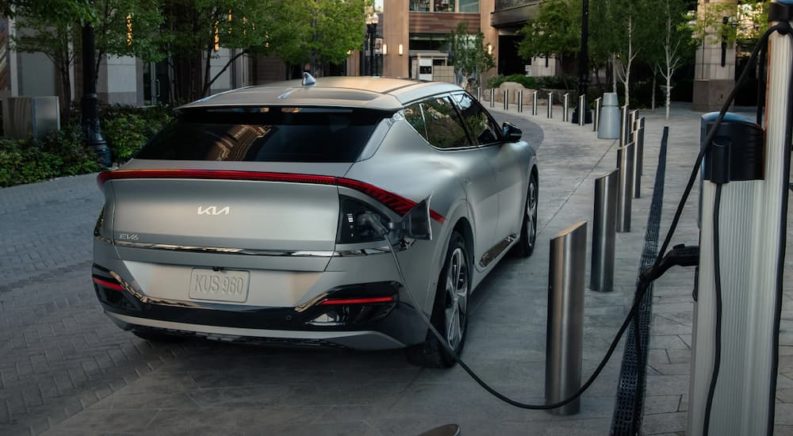Among the many advantages of electric vehicles is the fact that they generally require less maintenance than their traditional internal-combustion engine (ICE) brethren. In fact, EVs have drivetrains that consist of as few as 20 parts to an ICE’s 2,000. This simplification holds a number of advantages, as having fewer parts generally means fewer things that can break down and need to be repaired. However, that’s not to say you can forget about maintenance entirely after coming home from an EV dealer near you. Like any vehicle, they require regular care and attention to keep everything running smoothly, though they differ in a few key ways. Serving as an EV’s power source, the battery is one of the most important––and most expensive––components in the whole system, so regular battery maintenance is key. But how do you keep your EV’s battery in good condition?
EV batteries aren’t some AAAs that you can “borrow” from your remote control when things get sluggish. They’re huge arrays of battery cells consisting of expensive chemicals and elements that can cost $10,000 or more. While that cost is coming down all the time as the technology is refined, these batteries can still comprise as much as one-quarter of an EV’s total cost. The only real comparison in the ICE world would be the engine itself, which further illustrates the importance of regular battery maintenance. You wouldn’t expect the engine to last very long if you never changed the oil or filter, so why should a battery be any different? While there’s no single task quite as impactful as an oil change when it comes to EVs, there are a number of tricks and good habits to get into if you want to get the most out of your battery.
Li-ion Hearted
Lithium-ion batteries are a marvel of modern engineering and chemistry. By using lithium––the third smallest element on the Periodic Table––they boast higher energy density than the prior generation of nickel-cadmium batteries. They’re also not prone to the “memory effect” common to many rechargeable batteries, which causes the overall capacity to be reduced if they’re only partially discharged before being plugged back in. These batteries wouldn’t be nearly as practical if they discharged too quickly or rapidly lost capacity, so you can thank good old Li-ions for today’s increasingly widespread adoption of EVs. Battery technology has evolved rapidly in the last decade, with most EVs now boasting a range of at least 200 miles compared to an average of only 75 miles just ten years ago.
These same batteries power most of today’s consumer electronics, but unlike the battery found in your smartphone, an EV’s battery needs a little more TLC. This largely comes down to service life: we’re more likely to play fast and loose when it comes to charging our smartphones and keeping their batteries at optimal health because we generally don’t expect them to last for more than a few years. Planned obsolescence is certainly annoying in a number of ways, but hey, at least it gets you out of feeling too guilty about regularly scrimping along at 6 percent battery (that said, a number of the tips shared here regarding EV batteries can also be applied to all Li-ion batteries. Take that, Tim Cook). Here are a few easy ways to get the most out of your EV’s battery.

Avoid Extreme Temperatures
Most of today’s EVs use an active thermal management system to keep batteries at a very specific temperature range in order to maximize performance. Li-ion batteries typically do their best at around 60 to 100°F, and these systems use a number of methods––air, liquid, or thermoelectric cooling––to keep them in this range. These thermal management systems are active even when the vehicle is parked and can run the risk of draining your battery if exposed to high ambient temperatures. There are two easy ways to prevent active thermal management system-related drainage in high temperatures: parking in the shade or connecting the vehicle to a charging station. This issue will likely become less prevalent once the industry develops comparable passive thermal management systems, but those are still in the development phase at the moment.
While low temperatures don’t present as much of a risk for your li-ion battery in the long term, they can have a drastic short-term effect. Despite what your grandpa who kept his Duracells in the refrigerator might have told you (or maybe just us), cold temperatures are not good for a battery. When outside temps plunge below 20 degrees, an EV’s battery can instantly lose up to 10-15 percent of its capacity. Running electrical systems such as the heater can further reduce the battery’s performance, knocking as much as 40 percent off its total capacity (although modern EVs with heat pumps use far less energy keeping the cabin warm). Again, this won’t have a huge impact on the long-term health of your battery, but could present a nasty surprise should your EV’s range suddenly be halved.
Avoid Fast Charging
The way you charge your EV could have a big impact on your overall battery health. Generally speaking, the faster the method used to charge an EV‘s battery, the worse it’ll be for the battery’s longevity. While DC fast-charging options are convenient, you could end up paying the price down the line, so good habits pay off. There have been a number of studies conducted regarding various battery charging methods and their effect on battery health, and while the results aren’t totally conclusive, they provide some good insights.
First though, a refresh on charging levels: Level 1 chargers are the slowest option, using a standard 120-volt outlet and often taking a full day or more to completely charge a battery. Level 2 chargers require a large 220-volt outlet and usually take a few hours to charge. You’ll find these chargers at public charging stations, but they can also be installed for home use. DC fast charging stations use 480-volt DC power to get the job done in as little as 30 minutes, and even faster in some cases.
Of these three, Level 2 charging represents the sweet spot when it comes to battery health. While there is a minimal difference between the overall capacity loss between Level 1 and Level 2 charging, the jump to DC fast charging can make a big difference over time. Some studies indicate as much as a 10 percent reduction in battery life over an 8-year period. DC fast charging is undoubtedly the fastest, most convenient option, but with a little planning, it’s easy to avoid ending up in a situation where you’re regularly depending on such fast charging options.

Charge Smarter, Not Harder
With the prevalence of Li-ion batteries in today’s electronics, you’d think this would be common knowledge by now, but many drivers are surprised to learn that charging a battery too high can be just as bad as limping along under the 10 percent mark. Battery charging follows a non-linear curve, which means that charging from 80 to 100 percent can be far more taxing than going from 40 percent to 60 percent. Unless you plan on maxing out your range on a given drive, it’s best to get into the habit of not charging beyond 80 percent.
Most of today’s EVs will allow you to set a specific charging goal to extend battery life, and drivers with older EVs can purchase battery management systems to perform the same trick. Allowing the battery to fall below 20 percent can also reduce range and––given the relative scarcity of public charging stations––just isn’t a good idea in the first place.
These charging habits are especially important if your EV isn’t your primary vehicle. If leaving an EV parked or in storage for an extended period, use a timed charger or instruct the vehicle to charge to somewhere between 25 and 75 percent. If neither option is available, try to charge to 50 percent before unplugging the vehicle for a long period of inactivity. There is one notable exception for drivers living in areas with colder temperatures. During the winter, keeping the vehicle plugged in allows it to keep the battery warm. This can make a big difference when it comes to range, as a cold battery is going to offer significantly reduced mileage.
No matter what precautions you take, the average EV battery is going to lose some capacity as you rack up charge cycles (age and mileage alone actually have surprisingly little effect on battery health), but with a little planning and some good habits, you can easily keep that loss to a minimum. Avoiding extreme temperatures will not only increase the battery’s overall service life, but can also have a huge impact on range when it comes to everyday driving. Fast charging is an alluring option for drivers on the move, but using it too often can have a detrimental effect on your battery’s longevity.
Good charging habits should be common knowledge for those of us glued to our phones, but too often, we don’t apply this same level of care and attention to the $30,000-plus vehicles sitting in our driveways. EVs might be the vehicle of the future, but that doesn’t mean these innovative products don’t require some of the same care and maintenance as their gas-guzzling forerunners. While EVs may have simpler maintenance schedules in many ways, the battery is the last area you should neglect.

